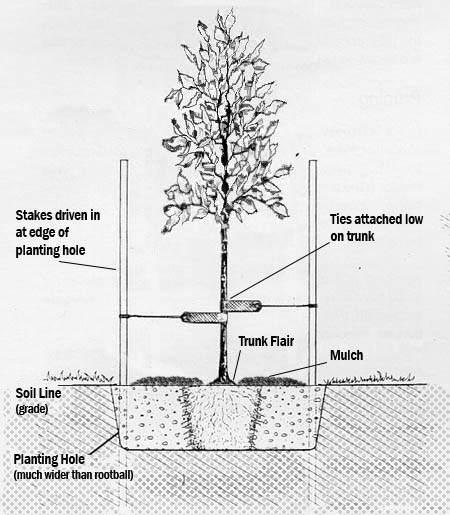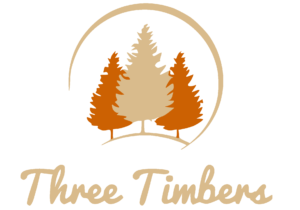Do's
- Allow lower branches to continue growing on young trees to develop a stronger trunk caliper.
- Retain lower branches on a new planted tree for at least the first growing season. Then moving forward, remove the minimum amount of branches to maintain a neat appearance. The less cutting throughout the first three growing seasons the better.
- Retain a natural shape when trimming the tree, cutting a minimal amount of branches to maintain a 7’ clearance height under the canopy at full maturity along walkways or according to city rules.
- Remove limbs that obstruct sitelines or pose a risk of becoming a liability.
- Trees provide shade. That’s why people pay a lot of money to add them to a landscape. Therefore, be sure to prune a tree in a way that you maintain shade over paved surfaces including driveways, patios, sidewalks, and parking lots.
- Remove all diseased and dead branches.
- Remove branches that conflict with structural limbs. Structural limbs are the branches that help form the overall canopy shape. For example, you would want to remove crossing branches and branches that rub against each other.
- Thin the canopy of trees to create balance and allow some light to filter through to inner branches and the trunk. Plus, it also allows you plant foliage under the tree.
- Remove limbs that are larger than 2” in diameter during the dormant season, when the tree’s growth is limited.
- When the trees have fully leafed out in the spring, after the frost season, branches that fail to grow leaves can be removed using proper trimming.
vs.
Don'ts
- Top or stub cut branches.
- Remove leaf buds.
- Prune into unnatural shapes such as boxes of spheres. This stresses the trees.
- Lion tail tree branches (lion tailing – stripping out all of the interior foliage, leaving only a small amount of foliage on the end of the branch).
- Prune to leave two co-dominant trunks.
- Raise the canopy too high.
- Flush cut limbs (flush cut – pruning cuts made as close as possible to the trunk or main branch).
- Remove more than 20% of the canopy branches.
- Over prune young trees.
- Use pruning paint sealer. (Tree pruning sealers are bad. They make it harder for your tree to recover. Plus, pruning sealers may trap moisture in the tree, which can encourage wood decay or fungi.)
- Use anvil type pruners on living branches (using an anvil pruner will likely crush a live branch instead of creating a clean cut).



